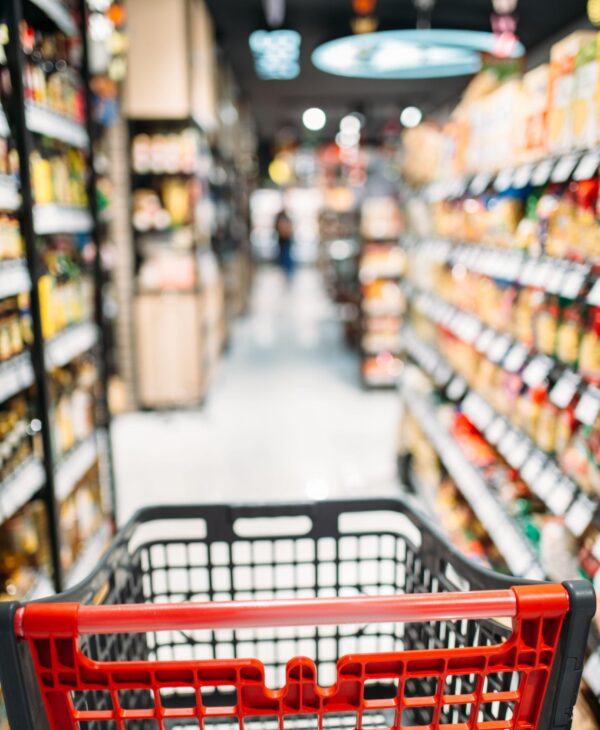Cookie management policy
In order to always improve your browsing experience on our site, we use anonymous browsing statistics.Business sector
Customer experience (CX) trends in the food and specialty retail sector
The revival of food and specialized distribution
Consumers’ buying habits are changing drastically. They are limiting their travels and now preferring local supermarkets. The shift of non-food purchases to e-commerce and specialized superstores is reinforcing the disaffection of hypermarkets. For these outlets, the erosion of sales is sometimes coupled with a drop in profitability.
Non-vehicular city dwellers or consumers concerned about adopting a more eco-responsible behavior are demanding stores on a human scale, closer to their homes. These addresses offer everything that can be found on the Internet, but also more environmentally friendly products (local, organic, bulk …): all delivered to the home in record time.

- Some players are taking advantage of this distribution crisis to make a profit. Low-cost or hard discount stores are multiplying. What they have in common is that they have reduced costs (staff, merchandising, central structures) and a cheap assortment that is sufficiently qualitative, thanks to the reputation of national brands, to attract the middle and working classes weakened by the economic stagnation.
- At the other end of the spectrum, we find Amazon and Alibaba, but also the French and European brands that have taken the tight turn of phygital. They have invested in efficient web tools while resizing their real estate to multiply proximity formats. Other brands have differentiated their offer and strengthened their brand image to create a preferential relationship with the French. Ikea, Picard, Grand Frais, Decathlon: these players have become unavoidable and are joined by a myriad of digital native brands, most of which were still unknown a few years ago.
- In addition to the strong competition in the retail sector, the retail apocalypse started in the United States with the bankruptcy of behemoths such as Sears or Toys’R’Us. The debacle eventually reached Europe, condemning the brands that had not made the necessary shift and rewarding only the most resilient.
PRESENCE’s support for each stage
of your CX transformation
Understanding and satisfying these new requirements to build customer loyalty will ensure the success of a retail chain.
As a customer experience specialist, PRESENCE accompanies food and specialty retailers step by step in their transformation.

Customer Feedback surveys or Mystery eXperience surveys are part of the CX research solutions we offer and will allow you to evaluate in depth the performance of your company in terms of customer experience. Thanks to the expertise of our collaborators, it will be possible to proceed to a diagnosis and to the establishment of Genius action plans shared with all your collaborators.
The Dynamic Report, a scalable CX platform, provides them with the essential KPIs. Finally, it is PRESENCE’s support that will encourage the adoption of a customer-centric culture at all hierarchical levels and throughout your network.
For the retail sector, where competition is fierce, the Benchmark will prove to be a valuable tool for learning about the best CX practices deployed in your market. By identifying your levers of progress and gaining an understanding of the topics that have the greatest impact on customer satisfaction, your retailer can implement a CX strategy that will lead to sustainable growth.
Case study: a major player
in the food retail industry
A major food retailer, popular with consumers, has trusted us since 2014 to help it manage the customer experience in its stores.
To begin with, it set up a “mystery customer” barometer to detect and correct recurring malfunctions and to raise the quality of service delivered by its teams in the field: gradually acquired welcome reflexes, then increasingly systematic commercial responsiveness.
As the needs of the company were rapidly evolving towards a “0 defect” concept, the “physical” criteria to be observed became denser, in addition to the “relational” criteria evaluated by the mystery shopper.
We therefore proposed to evolve the methodology in order to respond to the new problematic. On the one hand, the mystery shopper to evaluate the “relational” and even emotional criteria, in order to raise the level of requirement and thus the satisfaction of the customers. On the other hand, the operational audit to evaluate the “physical” criteria corresponding to a 0 defect strategy.
The results are there because the teams have a better vision of their “customer experience”
objectives and the indicators are constantly improving!